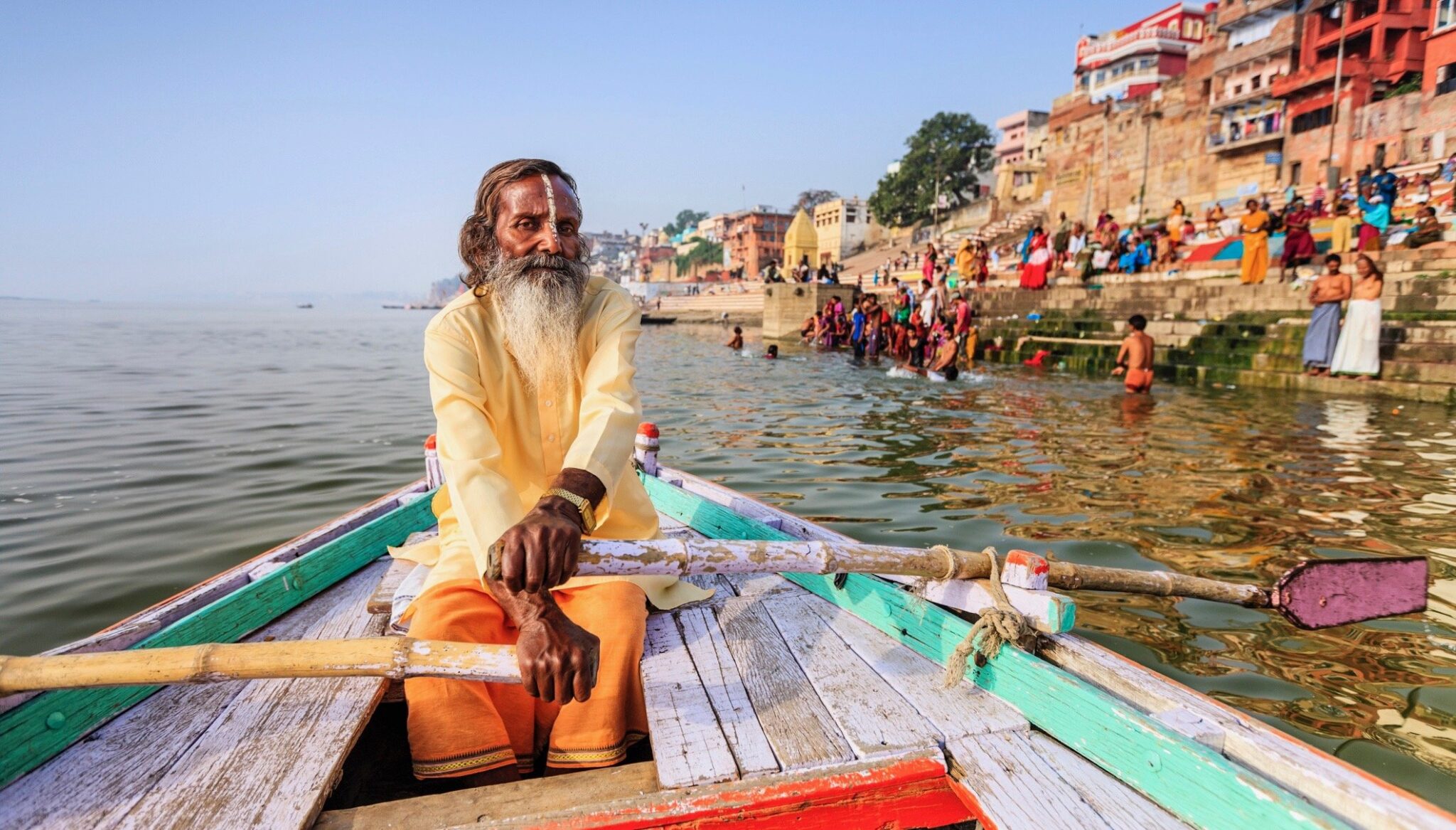

hadynyah / E+ / Getty Images
By Johnny Wood
The Ganges is a lifeline for the people of India, spiritually and economically. On its journey from the Himalayas to the Bay of Bengal, it supports fishermen, farmers and an abundance of wildlife.
The river and its tributaries touch the lives of roughly 500 million people. But having flowed for millennia, today it is reaching its capacity for human and industrial waste, while simultaneously being drained for agriculture and municipal use.
Here are some of the challenges the river faces.
Dolphins in Peril
The revival of the Ganges river dolphin in Barak river hinges on co-operation between India and Bangladesh for conservation, despite their differences over an upcoming dam. https://t.co/erFPTMfDzZ @sghstory
— Mongabay India (@MongabayIndia) April 29, 2019
Large schools of freshwater dolphins, known as Ganges River dolphins, were once found along the river. Now they swim in small groups or alone, and have become endangered due to pollution, dams, irrigation projects and the dredging of new shipping channels.
Raw Sewage
More than 1 billion litres of raw sewage flow into the river every day. In places, the water’s bacteria count reaches 3,000 times the limit declared safe for bathing by the World Health Organization.
Plastic Pollution
The first of many projects w/ @EndPlasticWaste. Lessons learned here will create an impactful, economical & scalable model we’ll look to replicate, helping stop the flow of plastic into the ocean. Excited to see what’s next! #EndPlasticWaste @NatGeo https://t.co/WULNBXzroh
— Jim Fitterling (@JimFitterling) August 20, 2019
Plastic and industrial waste, such as waste water from the leather tanneries that sit on the banks of the Ganges, are another cause of pollution.
Lack of Water
Plastic, industrial effluent, and 260 millions gallons of untreated sewage poison the Ganges every day. But the most serious long-term threat to the river is lack of water.
A new @NatGeo dispatch from the dying Ganges river: https://t.co/Qb4cgmbqKm #EdenWalk
— Out of Eden (@outofedenwalk) August 9, 2019
But perhaps the most worrying problem facing the river is its increasing lack of water. Water for irrigation is being removed faster than the rainy season can replenish it.
Dams and Diversions
#Manipur:- Proposed Tipaimukh #dam – a controversial political issue between #India & #Bangladesh – could be last nail in coffin for elusive #Ganges #river #dolphin in #Assam’s Barak #river system, researchers warn. https://t.co/5fY2n9XrQU @yamunajiye @MallikaBG @ManshiAsher
— SANDRP (@Indian_Rivers) May 3, 2019
The Ganges is being throttled by more than 300 dams and diversions, with many more blocking its tributaries, stopping the natural ebb and flow of the river.
Monsoon Rains
Every monsoon, flooding inflames tensions between India and Nepal, with angry residents on both sides blaming those across the border for their woes.https://t.co/3T6FBVyfHE
— BBC News India (@BBCIndia) July 16, 2019
Climate change is making the monsoon rains unpredictable, increasing the likelihood of extreme weather events like droughts, and leaving the fishermen of the Ganges with dwindling catches.
Reposted with permission from our media associate World Economic Forum.
- How Fast Fashion Is Killing Rivers Worldwide - EcoWatch
- Plastic Fishing Waste Threatens Endangered Wildlife in Ganges River - EcoWatch

 233k
233k  41k
41k  Subscribe
Subscribe 